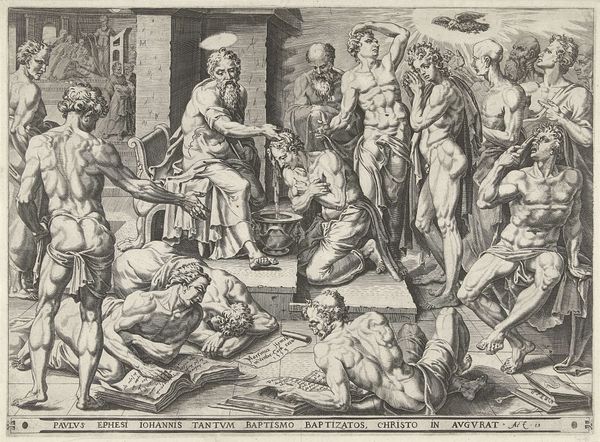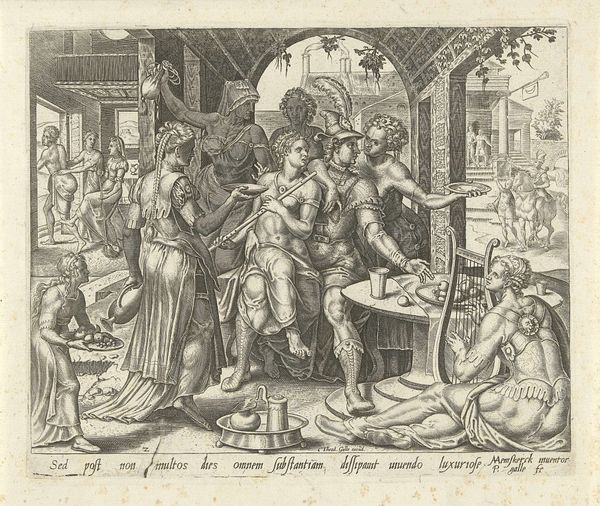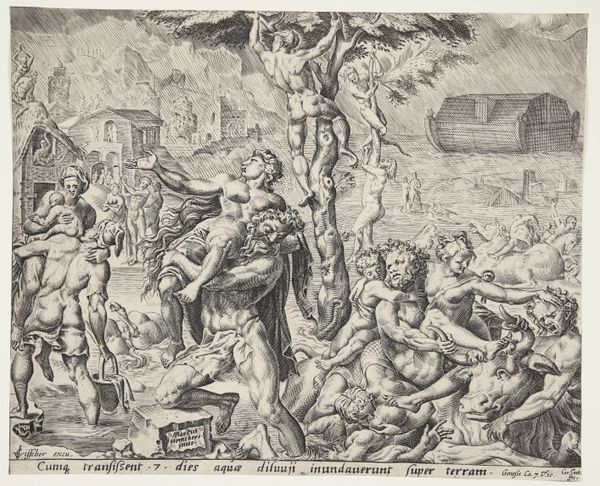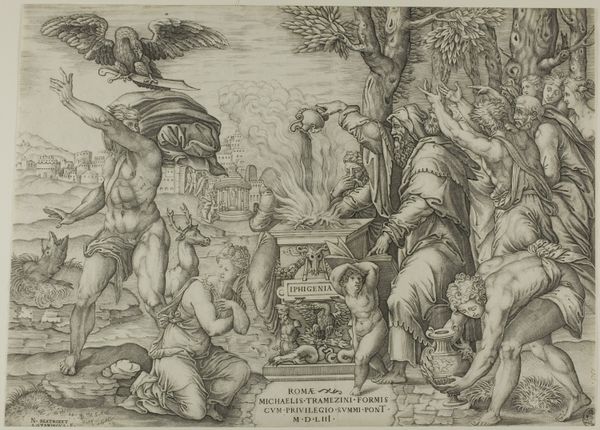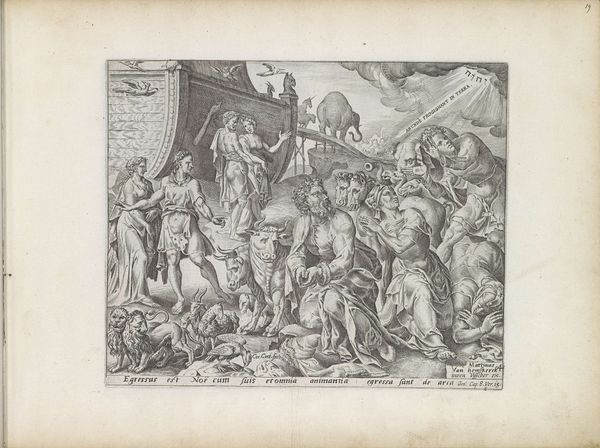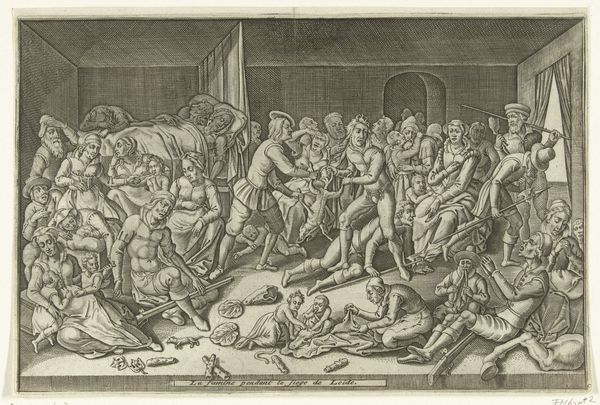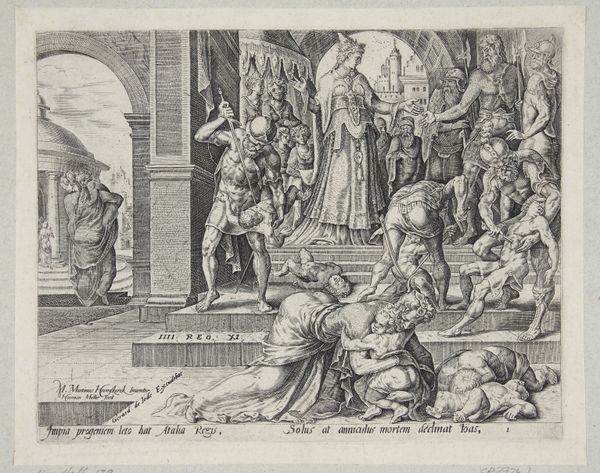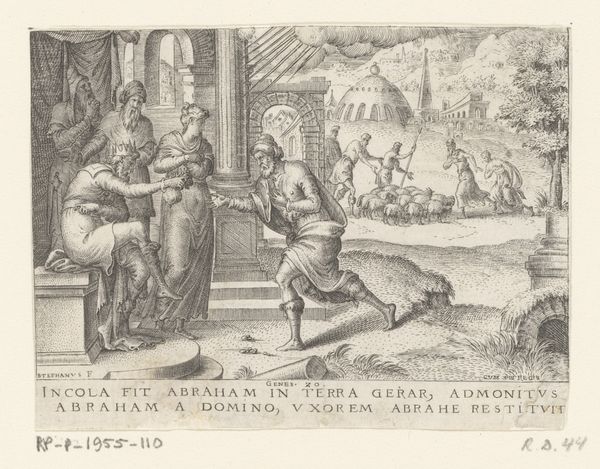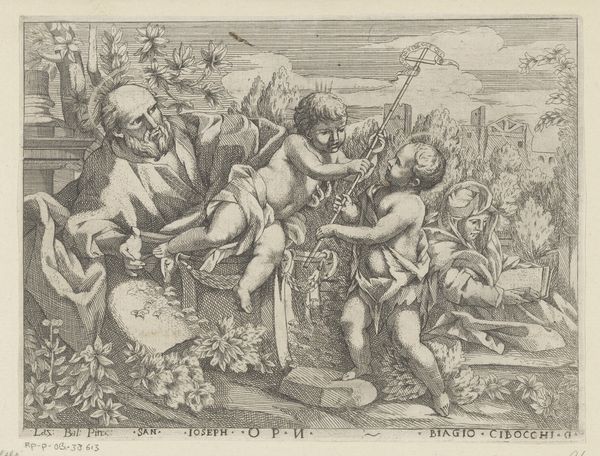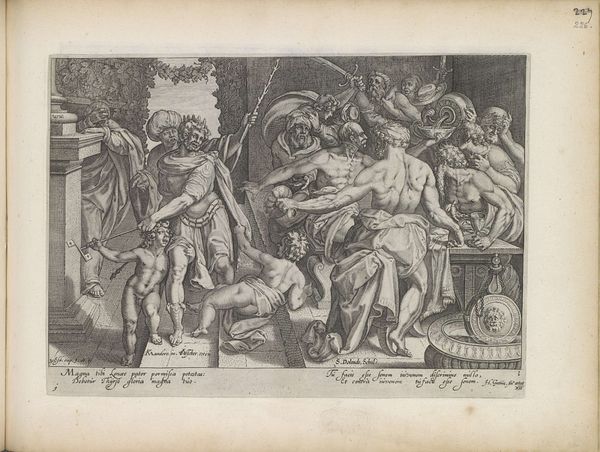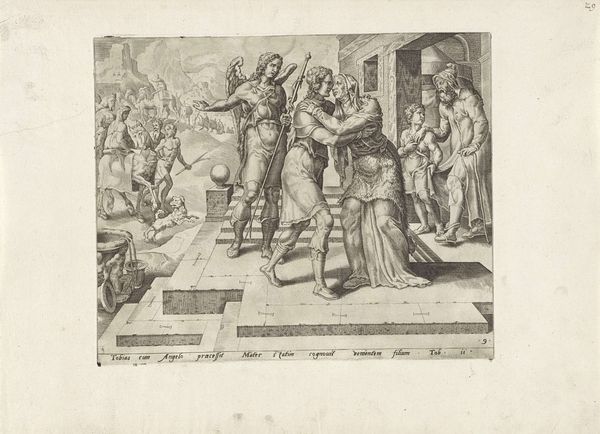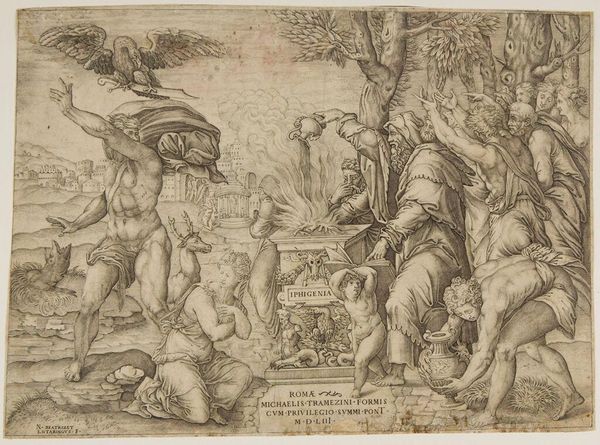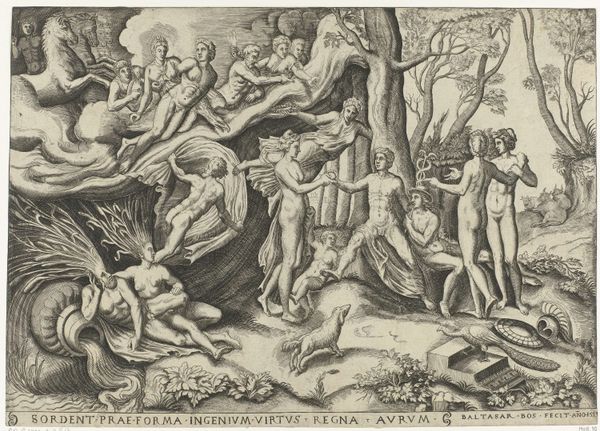
print, engraving
#
narrative-art
# print
#
old engraving style
#
mannerism
#
figuration
#
personal sketchbook
#
history-painting
#
engraving
Dimensions: height 207 mm, width 250 mm
Copyright: Rijks Museum: Open Domain
Editor: Here we have Philips Galle’s engraving, "The Return of the Prodigal Son," dating roughly from 1596 to 1633. The composition is quite striking, how the kneeling son and embracing father become the focal point within this intricate scene. What are your initial observations? Curator: The success of this Mannerist engraving hinges upon its structural clarity. Observe how the artist employed distinct foreground and background planes. The embrace serves as the nucleus, effectively directing our gaze, but what about the architecture? Does it complement the figuration? Editor: Well, the detailed architecture in the background adds a sense of grandeur, perhaps hinting at the father’s wealth and status, or just the general concept of 'home.' The detail feels a little busy though. Is it competing with the main event? Curator: The details may very well add layers of complexity, typical of the Mannerist aesthetic, where clarity sometimes yields to visual intrigue. See how the composition adheres to Mannerist conventions with elongated figures and slightly exaggerated poses that create a dynamic surface? It invites careful reading. Editor: That’s interesting. I hadn't considered how the physical forms contribute to the story's intensity, it’s about creating a very artificial, stylised expression. I always think of 'style' as something on the surface, like the 'old engraving style' tag. Now, looking closer, I appreciate the lines for their shapes as much as their narrative representation. Thank you! Curator: Precisely. Formal analysis reveals that this isn’t simply an illustration of a parable. It is an intricate composition playing with spatial relationships and visual cues, a demonstration of technical virtuosity meant to elicit more than a simple emotional response. It seems we have both gained a greater understanding of its visual language.
Comments
No comments
Be the first to comment and join the conversation on the ultimate creative platform.
